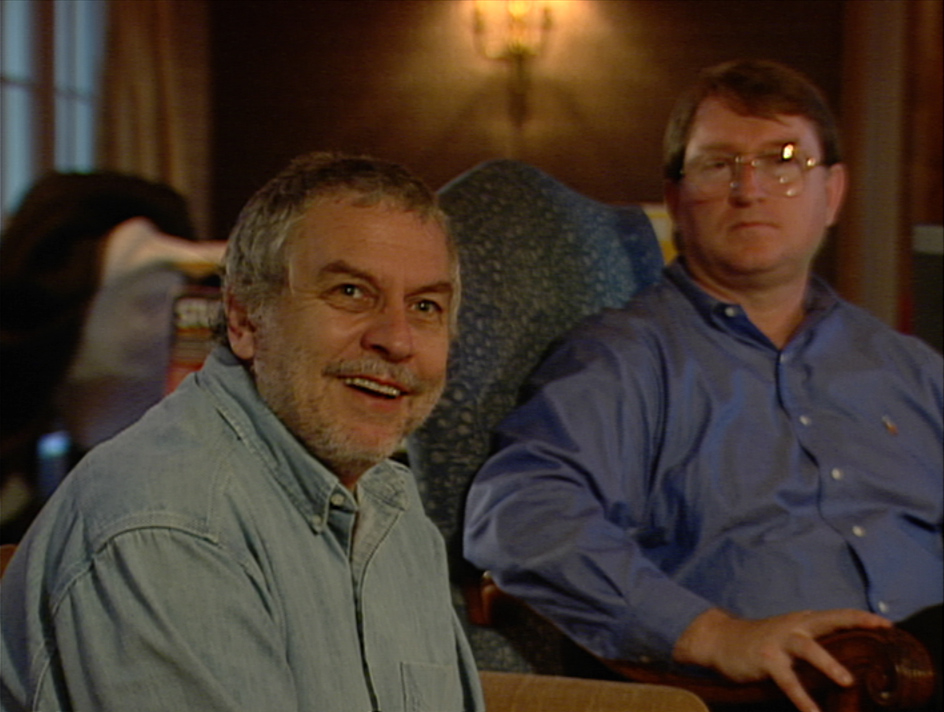Stella at 20, at 20
Okay... that's a bit of a cheat. Technically, it should be Stella at 20, at 19.
But that just doesn't sound as cool.
Bet you never thought you'd see another post about this project... did ya'?
Well, at a certain point, neither did I.
Eleven years ago, almost to the week, I received the original camera tapes for the two-volume documentary Stella at 20 from Glenn Saunders, with the intent of re-editing it into an expanded version of the documentary.
The goal was to put it out on DVD, since it initially only appeared on VHS, and Volume 2 had never been widely available.
The problem with just releasing the original documentary to DVD was that the master tape of Volume 1 had been lost by the duplicating house, and no dub had been made of it. So there was no way to get anything better than VHS quality for Volume 1, without going through and re-editing it from the source tapes. And if you're going to do that - why not expand it, since over a dozen hours of footage was shot?
Well, that was the thought anyway.
But, as happens with so many other hobby-centered projects, it went nowhere. The time needed to invest in it and do it properly never materialized. Between my job, other Atari-related projects, and occasionally real-life, I just didn't have the time to do it.
For all intents and purposes, I completely underestimated the amount of time and effort this was going to take.
At least two other people over the years offered to re-edit it as well. None of the offers panned out.
Something else that factored into this, was that video technology was rapidly changing. It became a moving target. As part of my job, I spend a great deal of time trying to hit that target. When I originally digitized the tapes, the best quality I could manage was DVCAM format. Now this could be considered - charitably - a "prosumer" format. And for editing a DVD, it would be acceptable. But for creating new masters equal to the quality of the original Betacam footage, not so much.
Within a couple of years, the equipment I had access to changed significantly, and I could then capture video uncompressed. Clearly, this would be the way to go, but it meant re-digitizing over two-dozen tapes, and even then, the big problem was still carving out the time needed to re-edit it all.
Within another couple of years things changed significantly again, as we moved on from standard definition to high definition. And while the tapes were never shot in HD, it still factored into the question of what was our target? Was it Blu-ray? Do we upscale everything? Do we stick with DVD? Well, that became a moot question too, as the emergence of YouTube completely changed how people consumed video. Even though it wasn't authorized, Volume 1 of Stella was already out there. From exactly the sort of grainy, low-resolution VHS source that Glenn had wanted to avoid in the first place.
Glenn's solution: Skip the re-edited version, and just put all of the original camera tapes online. The two released volumes ran 2 hours and 40 minutes combined. That meant 10 hours of material had never been seen. Even with an expanded documentary, most of that material would still have remained hidden away. This way, everyone who really wanted to see this amazing time capsule, could do so in its entirety.
The destination? Archive.org.
To present the material in the best possible quality, the tapes needed to be recaptured with online playback in mind. I ran a number of tests, showing them to Glenn for his approval.
In the end, we decided the best results were to upscale everything to 1280 x 720p, 60fps. This de-interlaced the material (essential for online playback), and upscaled the material for viewing on computer monitors (we found 1080p to be unnecessary, given the standard definition source material). We maintained the original aspect ratio (pillarboxing the video), and made no edits to the material, apart from muting the reference tone at the beginning, and overlaying titles onto the color bars. Any edits present were done in-camera, during the shoot.
And now, finally, it's all done.
You can watch all 27 original camera tapes (plus some rare bonus footage of Jay Miner) online, right here:
https://archive.org/details/StellaAt20
Having watched through all of the tapes several times, I can tell you there's some fascinating, amazing footage in there. Great stories, technical background, industry insights, history, anecdotes - enough to keep you busy for, oh... about 14 hours altogether. Since these are unedited, there are stops and starts, off-camera comments, awkward pauses and just dead air. But it's all worth wading through to get to the good stuff.
I hope you enjoy it! It's been a long road to get here.
Some technical information, regarding how the tapes were captured:
Hardware:
- Playback deck: Ampex CVR-75
- Time-base corrector: Leitch DPS-475
- Capture interface/scaling/de-interlacing: Blackmagic Teranex 3D
- Computer: Apple Mac Pro 6,1, 3GHz 8-core Xeon, 32 GB RAM
Software:
- Capture: Blackmagic Media Express
- Video editing: Adobe Premiere Pro
- Audio editing: ProTools HD
- Video encoding: Adobe Media Encoder
Codecs:
- Capture: Video: Apple Pro Res 422 (HQ), 1280x720p, 60 fps; Audio: 24-bit, 48kHz uncompressed
- Upload: Video: H.264, two-pass vbr, 10Mbit/sec, 1280x720p, 60 fps; Audio: AAC, 320kbps, 48kHz
-
 11
11



9 Comments
Recommended Comments